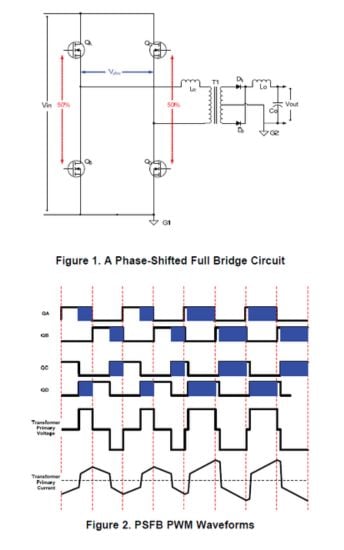High-Voltage MOSFETs Deliver Efficiency, Power Density and Reliability
Alpha & Omega Semiconductor has released high-voltage super junction fast recovery diode MOSFET devices for various applications, including servers, solar inverters, electric vehicle charging, and industrial power.
Alpha & Omega Semiconductor (AOS) has released two αMOS5 high-voltage FRD (fast recovery diode) MOSFET devices designed to deliver efficiency and power density in a broad range of computing, energy, electric vehicle (EV) charging, and industrial applications.
Power-dense server computing applications. Image used courtesy of Alpha & Omega
The AOK095A60FD and AOTF125A60FDL are rated to 600 V of withstand voltage with on-resistances of 95 mΩ and 125 mΩ, respectively, to minimize conduction losses in high-voltage switching power conversion applications.
The FRD FETs are constructed using AOS’ proprietary αMOS5 high-voltage super junction technology designed for ease of use and robustness and to accommodate power-dense applications that operate at high switching speeds.
Switch Mode Power Supply Design
According to AOS, the design of modern mid to high-power switched-mode power supplies and inverter systems feature more efficiency and power density performance without compromising solution costs or reliability.
PSFB conversion circuit and waveforms. Image used courtesy of TI
AOS’ high-voltage super junction MOSFETs are suitable for a range of switch mode power conversion topologies, including totem pole PFC, resonant LLC and PSFB (phase-shifted full bridge) converters.
Telecom Bus Applications
Among other applications, the PSFB DC-DC conversion topology is commonly used in telecommunications power system applications where a higher voltage (400 V or more) needs to be isolated and stepped down to the standard 48 V point of load bus voltage.
Telecom power distribution. Image used courtesy of Alpha & Omega
Current or voltage mode control schemes can be used to implement PSFB or other topologies, with zero voltage switching and synchronous rectification techniques used to maximize conversion efficiency.
Fast Recovery Diode FETs
In a MOSFET, an intrinsic body diode is formed between the device drain and source terminals. During normal operation, the body diode acts as a blocking diode, preventing current flows through it from the drain to the source. However, during abnormal or system fault conditions, the body diode can forward bias.
For device robustness, the body diode must withstand intermittent forward bias conditions and recover quickly to its nominal reverse bias state without sustaining damage. synchronousof the body diode can occur when a FET is exposed to abnormal short-circuit or start-up transient scenarios.
The design of the αMOS5 FRD FET body diodes allows them to survive the potential high di/dt conditions during reverse recovery from a forward bias state.
According to the datasheet, the AOK095A60FD body diode can recover from a forward current of 19 A in about 218 ns with a typical peak reverse recovery current (IRM) of 18.5 A and a total reverse recovery charge of 3.9 µC.
Diode recovery test circuit and waveforms. Image used courtesy of Alpha & Omega
Bidirectional Power
Along with traditional power supply configurations, the AOK095A60FD (TO-247) and AOTF125A60FDL are well suited to bidirectional topologies that can convert power in both directions.
According to Richard Zhang, Senior Director of Product Line and Global Power Supply Business at AOS, as AC-coupled energy storage systems become more prevalent, the AOK095A60FD and AOTF125A60FDL will emerge as leading solutions for the bidirectional PFC inverters and DC-DC converters that relay energy to and from large storage batteries.
The AOK095A60FD and AOTF125A60FDL are available immediately in production quantities in TO-247 (15.94×20.95×5.02) and TO-220F packaging, respectively.










